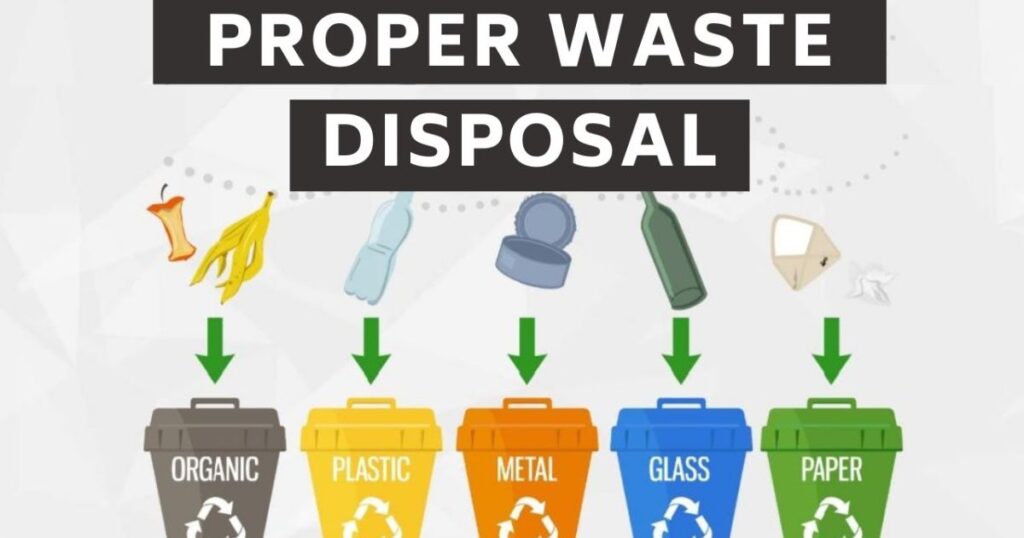We’ve all got stuff we need to get rid of – from household junk to yard waste to hazardous materials. But figuring out where to properly dispose of it all can be a hassle.
Don’t sweat it, this guide has you covered! We’ll walk through all the main types of waste disposal facilities and help you locate the perfect spot to take care of your unwanted items.
What Are the Different Types of Waste Facilities?
When it comes to waste disposal, there are several different kinds of facilities to handle various types of materials. Here are some of the main categories:
These are drop-off sites where residential customers can dispose of non-hazardous, non-collectable items like furniture, appliances, and general household junk. They often have recycling areas too.
Some facilities are equipped to handle household hazardous wastes (HHW) like chemicals, batteries, electronics, and other toxic materials that require special handling and disposal methods.
Landfills are designated areas where solid, non-hazardous waste is buried. Transfer stations temporarily hold waste until it can be transported to a landfill or other disposal site. These are commonly used by commercial haulers.
As the name implies, these are places to bring your recyclable items like glass, plastic, paper, and metals to be processed and repurposed.
Dedicated locations to dispose of organic yard debris like leaves, grass, brush trimmings to be turned into nutrient-rich compost or mulch.
Don’t want it anymore but it’s still in good shape? Some waste facilities have areas to drop off gently-used clothing, furniture, appliances and other items to be donated or sold secondhand.
How to Find Waste Disposal Near Me
The first step is simply searching for “waste disposal near me” or “[your city] waste management facilities.” This should bring up maps and listings of the various options in your area.
Another great resource is your city or county’s website, which often has dedicated pages for solid waste and recycling services with facility details. You can also try calling 311 or your local waste/sanitation department.
Add “site:.gov” to your Google searches to focus on official municipal listings.
You wouldn’t believe some of the bizarre things people have tried to “dispose” of! From living animals to human remains, waste facilities have seen it all.
What Can (and Can’t) You Bring?

Knowing what types of items are accepted at each facility is key. Here’s a quick overview of some common categories:
Accepted at Most Disposal Sites:
- General household junk (furniture, toys, small appliances, etc.)
- Construction/renovation debris (in limited quantities)
- Yard waste like leaves, branches, grass clippings
Hazardous Wastes Requiring Special Handling:
- Chemicals, pesticides, oil-based paints
- Batteries
- Electronics/TVs
- Fluorescent light bulbs
- Medical wastes
Large-Scale Construction/Demolition Waste:
- Major home renovation debris
- Roofing materials
- Concrete, bricks, blocks
While most sites can handle regular household waste, only designated hazardous waste facilities can accept toxic items. And extremely large loads may need to go to a special transfer station.
Always call the facility ahead of time if you have an unusually large load or potentially problematic items to inquire about proper disposal.
Prepping Your Waste for Dropoff
A little preparation can go a long way to make your disposal trip smooth and efficient:
- Sort and Separate: Have your different waste streams ready in their own piles or containers (recyclables, hazardous, yard waste, etc.)
- Contain It: Put any smelly, dusty or potentially leaky items in tied plastic bags or containers with lids.
- Secure Loads: Use tarps, tie-downs, netting or rope to ensure nothing blows out of your truck/trailer on the way there.
- Learn Handling Procedures: For hazardous wastes, make sure to read and follow any special packaging/handling instructions.
- Don’t Forget:
- Bring ID and payment method (cash, card, etc.)
- Tarps, tie-downs, help for lifting heavy objects
- Proper protective equipment like gloves if needed
Comparing Disposal Facility Costs

The fees for waste disposal can vary significantly depending on the facility type, location, and what exactly you’re dropping off. Most charge by weight (per ton) or truck load, with minimum charges even for small loads.
Here are some typical fee ranges as a rough guide:
| Waste Type | Avg. Cost Range |
| Regular Household Solid Waste | $20 – $60 per ton |
| Construction/Demolition Debris | $25 – $80 per ton |
| Yard Waste | $15 – $45 per ton |
| Appliances (Air Cons, Fridges, etc.) | $10 – $35 per item |
| Household Hazardous Wastes | $5 – $25 per item/container |
Many municipalities offer special collection events a few times per year where residents can drop off hazardous household items for free or deeply discounted rates. Be on the lookout for those money-saving opportunities.
Money-Saving Tip:
See if your local facility offers free mulch, compost or woodchips made from processed yard waste – great for gardens and landscaping.
In Conclusion
Finding the right place to dispose of your unwanted junk, hazardous waste, yardstuff and other items doesn’t have to be a chore.
By identifying your disposal needs, locating nearby facilities, and following proper preparation and handling procedures, you’ll be pitch-perfect when it comes to pitching your unwanted stuff! Just take it one step at a time:
- Figure out what you need to get rid of
- Search for local disposal sites that accept those items
- Sort, contain, and secure your load
- Be aware of costs and requirements
- Drop it off safely and responsibly!
With this complete guide, you’re well on your way to decluttering your life and reducing your environmental impact. Now get out there and start finding those waste facilities near you.

Ava, boasting five years in home blogging, shares expertise in domestic living. With a sharp eye and passion for details, she navigates home decor and lifestyle intricacies effortlessly.







